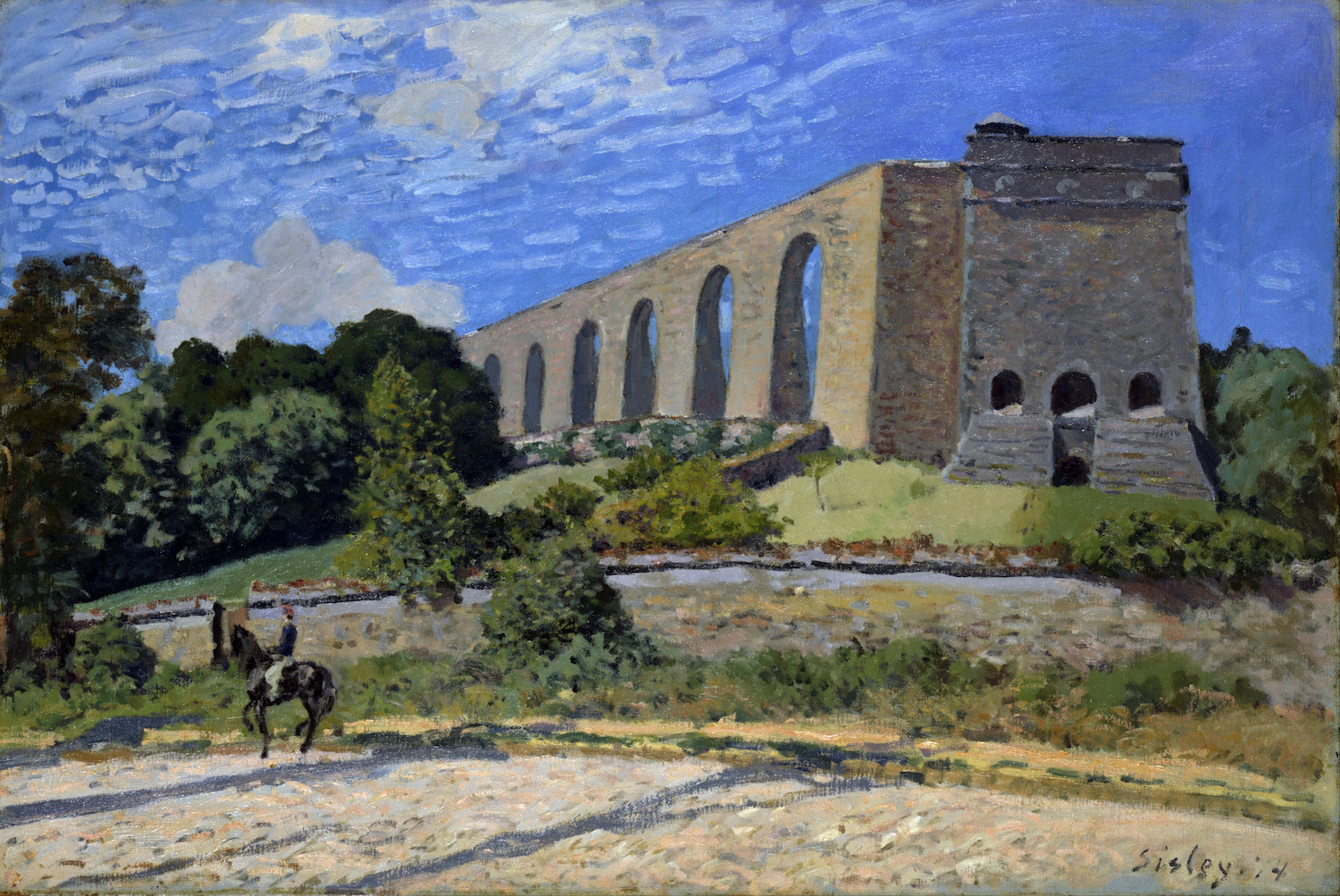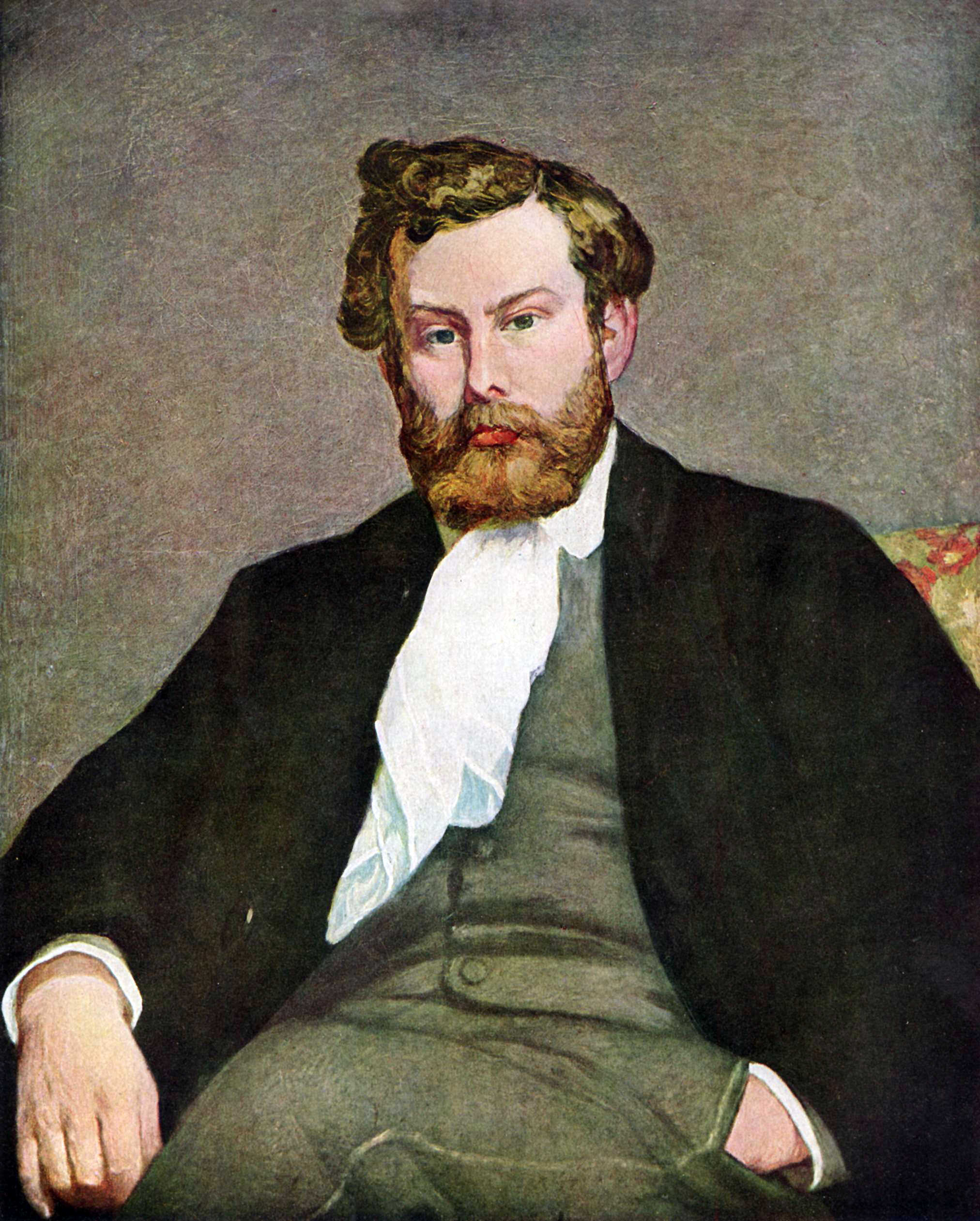A relic of France's royal past, the aqueduct at Marly-le-roi on the outskirts of Paris rises majestically against a brilliant autumn sky in Alfred Sisley's 1874 painting. It had been built in the seventeenth century as part of a complicated waterworks system designed to pump and carry water from the Seine to supply the elaborate cascades and fountains of the king's gardens at the Château de Marly and Versailles.
Inoperable for about a decade at the time of this painting, it remained a draw for tourists. However, Sisley includes only a lone horseman—a member of the local militia—passing by as if oblivious to the towering structure. His presence serves to emphasize the note of isolation and neglect, as the aqueduct seems slowly encroached upon by the landscape in which it nestles. Sisley devoted himself primarily to landscape and village views rather than to the images of modern Parisian life and leisure activities that fascinated his friends and fellow Impressionists Pierre-Auguste Renoir and Gustave Caillebotte. Sisley lived in the village of Louveciennes, and the Marly aqueduct was an easy walk from his house. This is his only view of it close up, isolated as a subject in itself. Sisley focuses on the visual purity of the scene, creating a harmony of light, color, and form. More than just the aqueduct, his subject seems to be the ways that the solidity of a man-made structure contrasts with, and at the same time is undermined by, the ever changing nature around it. His rapid and varied brushwork enhances this impression by creating a sense of shimmering impermanence.


 Alfred Sisley
Alfred Sisley